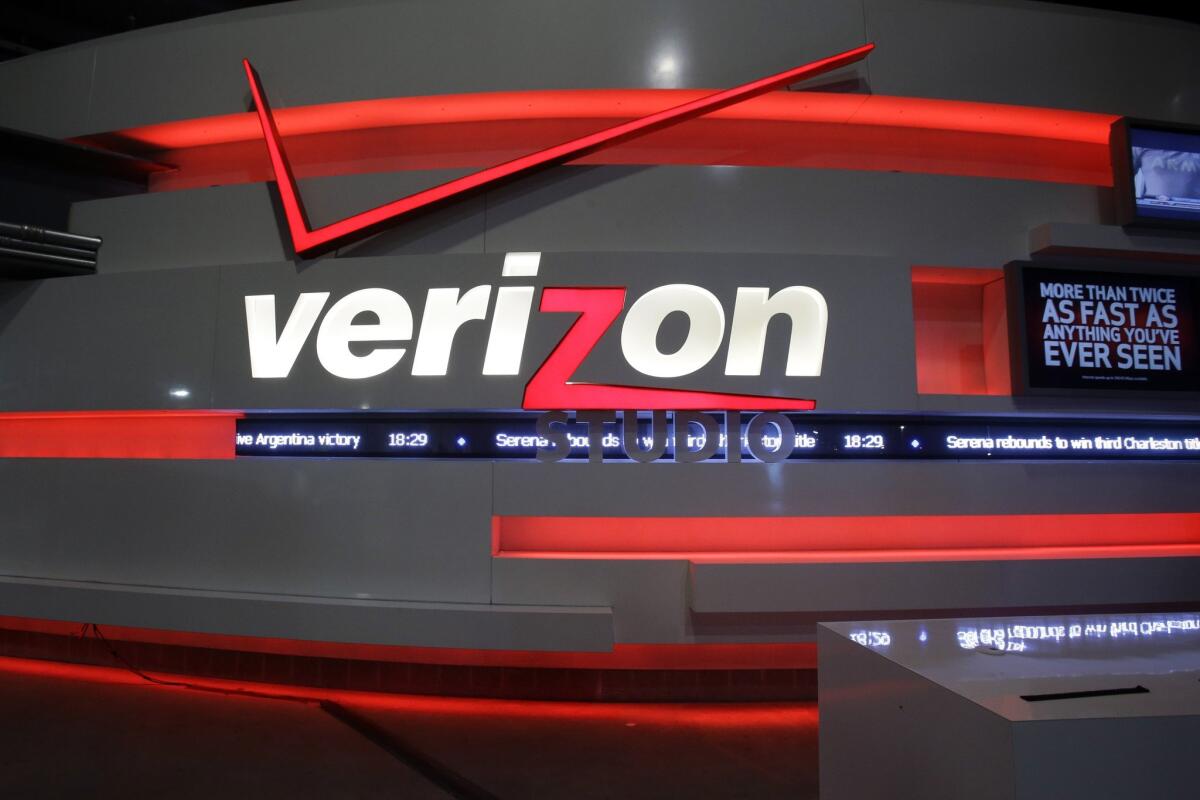Verizon breaks the cable bundle — but there’s an asterisk

- Share via
The good news is that some day soon “triple play” will mean something only to baseball fans. These days, though, cable TV customers probably still know it better as the industry’s torture device.
Triple-play bundles refer to long-term contracts with a company such as Comcast Corp. or Charter Communications Inc. that provide internet, television and landline phone service for one “discounted” rate. These packages force you to have an old-school home phone number, seemingly just for telemarketers to call, and dozens of TV channels you’ll never watch but will nevertheless subsidize. Meanwhile, all you really want is a fast internet connection to binge on Netflix and gain access to a handful of your favorite network shows.
But rejoice, there’s a movement afoot that may send triple-play bundles the way of the rotary telephone. Verizon Communications Inc. announced Thursday that its Fios division is ending these aggressive you’ll-take-it-all-and-you’ll-like-it bundles, allowing subscribers to better customize their plans with what it’s calling Fios Mix & Match. Users can choose among three different internet-speed options that range from $40 to $80 a month and several TV packages that run from $50 to $90 a month. No annual contracts, it says, and no surprise fees — well, sort of! After all, this wouldn’t be the cable and phone industry if there weren’t some doozies contained in the fine print. For example, some of the options do have an additional fee for a set-top box or router. A home phone line is a separate $20, to which you can kindly say, “No thank you.”
Verizon won’t be the last to give in and smash the bundle, at least for now. They’ve been in decline as an increasing number of customers switch to broadband-only service. There may be more than 50 million broadband-only U.S. homes by 2023, which would make up about half of all pay-TV households, according to research by Bloomberg Intelligence. To stem the drop in revenue, the cable giants have been pushing video add-ons, the researchers found. Charter, which acquired Time Warner Cable in 2016 to strengthen its business against cord-cutting, began offering a $15-a-month skinny video bundle called TV Essentials last year. Here’s how the trend has played out at Charter: Its number of triple-play subscribers has sunk — at about the same rate that its number of subscribers with two services (usually just internet and video) has climbed.
Lest you, dear cable customer, believe that this is a sign the industry is finally listening, remember that we’re still nowhere near a true a la carte service. Verizon’s new Your Fios TV package for $50 a month allows subscribers to pick five channels, while Verizon arranges the other 120 channels. How many customers wish they could just take the five and call it a day? Moreover, streaming-video apps won’t necessarily lead to lower monthly bills either. Verizon’s mid-rate internet option (with router), plus Disney+, Netflix and HBO Max would cost a combined $110 a month (although Verizon is currently offering internet users a year of Disney+ free, and Verizon wireless customers can get other savings). The point is, the ideal video-app configuration may not be any cheaper than going for a triple play.
That’s why bundles will live on, even if the traditional triple play won’t. If anything, bundles will likely be back en vogue later this year. In November, I called for the Great Rebundling, predicting that the cable giants — which have been benefiting from a surge in broadband signups — will next look to leverage their content distribution relationships by offering bundles for streaming apps and internet service at one rate. Apple Inc. and Amazon.com Inc. may seize similar content-bundling opportunities, which would at least help solve the consumer frustration of paying for apps individually in various places.
This is why — even as millions of customers have permanently abandoned cable TV, sending media networks into a tizzy — the cable companies haven’t even broken a sweat. Shares of Comcast rose 32% in 2019, and analysts see them climbing 13% in 2020. Charter’s gain last year of 70% made it the leading media stock in the Standard & Poor’s 500 index. Triple play will be reincarnated with a new cute name, and prices will eventually go up, and everyone will complain, and the cable industry will be as good as new.
Lachapelle writes for Bloomberg.
More to Read
Inside the business of entertainment
The Wide Shot brings you news, analysis and insights on everything from streaming wars to production — and what it all means for the future.
You may occasionally receive promotional content from the Los Angeles Times.










